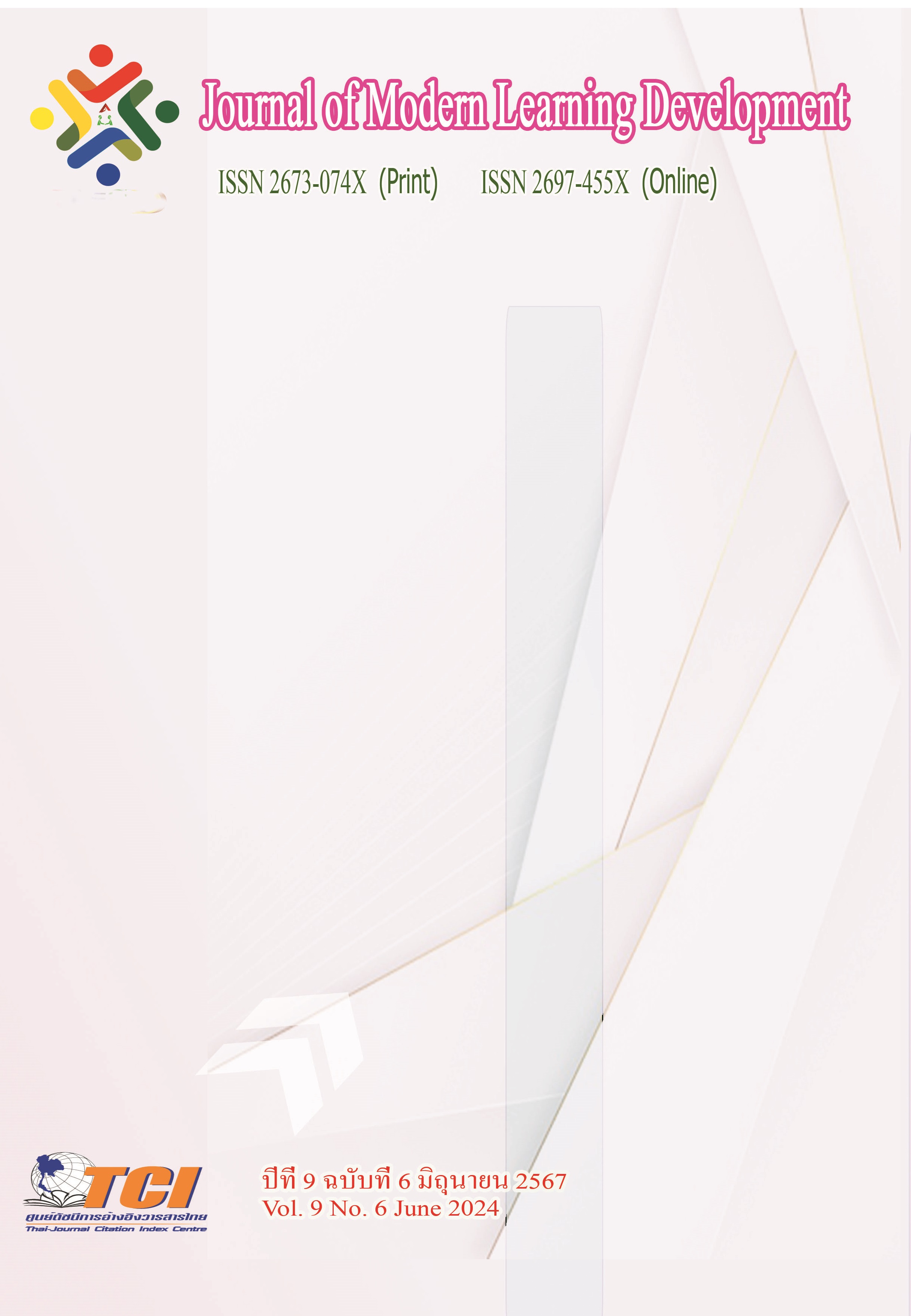The Transmission of Qiang Music at Aba Autonomous Prefecture in the People's Republic of China
Main Article Content
Abstract
The objective of this article is to investigate a guideline the transmission of Qiang music within the Aba Autonomous Prefecture of the People's Republic of China is a rich cultural practice that involves both preservation and adaptation. This article explores the various methods and challenges associated with the preservation and transmission of this unique musical tradition in the modern era. Through an analysis of historical practices, contemporary efforts, and the impact of socio-cultural changes, this study sheds light on the importance of safeguarding Qiang music for future generations. The Qiang people, one of China's oldest ethnic groups, live in high mountainous regions and identify themselves as "the people living among the clouds." They depict their homes as "rocks functioning as rooms" and their way of life as being in tune with the mountains. Although they lack written records to document their ancient music and dances, the Qiang have cleverly maintained and passed down their cultural legacy, deriving both practical support and deep spiritual richness throughout their long-standing past.
Article Details
References
Chen, R. (2018). The symbols of Qiang music culture and the memory of singing and dancing—an investigation based on sheepskin drum music and Guozhuang music. Sichuan Drama, 1 (11), 20-30.
Herlihy, M., & Liskov, B. (1982). A Value Transmission Method for Abstract Data Types. ACM Transactions on Programming Languages and Systems, 4 (4), 527-551.
Hua, M. (2018). Research on the exposure of Qiang and Han music to Qing folk songs in Mianzhu. Journal of Ethnology, 1 (03), 10-30.
Ji, Y. (2016). Field investigation of the Qiang traditional sports activity sheepskin drumming from the perspective of religious secularization. Research Report. College: Chengdu Institute of Physical Education.
Li, Q. (2015). Research on the Inheritance and Development of Jiangxi Folk Music. Big Stage, 1 (10), 241-242.
Liu, J. (2019). Research on Qiang sheepskin drumming in Wenchuan County. Research Report. College: Shenyang Conservatory of Music.
Nie, P. (2018). Research on the Inheritance and Development of Jiangxi National Folk Music. Yi Hai, 32 (7), 37-38.
Song, X., & Sun, H. (2012). An analysis of the "three-dimensional" protection and inheritance model of Qiang music. Music Exploration, 1 (04), 30-50.
Tian, C. (2023). Cultural heritage protection: inheriting the splendid Chinese civilization. Journal of Social Sciences, 29 (001).
Wang, X. (2018). The Exploration and Expansion of the Modern Inheritance of Ethnic Traditional Folk Music. Music Creation, 22 (5), 165-166.
Xia, L. (2018). Research on the Spread and Development of Traditional National Music Culture. Guizhou Ethnic Studies, 13 (3), 9-62.
Yu, M. (2023). Research on the inheritance and protection of Qiang musical cultural heritage in the process of social change. Sichuan Drama.
Zhang, J. (2019). The evolution and presentation of Qiang dance from the original ecological form to the stage form. Research Report. College: Northwest University for Natio nalities.
Zhao, G. (2020). Analysis of the Modern Inheritance and Development of Chinese Traditional Music. Frontiers in Art Research, 2 (01).
Zhao, X. (2024). Guizhou cultural heritage enters life in a vivid way. Guizhou Daily, 10 (06).
Zheng, X. (2011). Folk instrumental music of the Qiang people in Beichuan. Literary Contest Press.
Zhu, T. (2013). The current situation of the protection and development of Qiang traditional folk songs. Popular Literature and Art, 3 (12).


